Financial News
Review Meeting for Carbon Fiber Common Bulkhead Tank Process Master Plan Successfully Concludes: Chinese Rocket Brand Welight Emerges as a “Dark Horse” in Carbon Fiber Rocket Race
Chinese rocket brand Beijing Welight Science and Technology Co., Ltd. (“Welight”) recently announced successful conclusion of a review meeting for the carbon fiber common bulkhead tank manufacturing process master plan. The expert review panel comprised specialists from over ten professional fields, including cryogenic epoxy resin materials, prepreg manufacturing, mold design and fabrication, tooling design and manufacturing, structural design and simulation, composite structural design and manufacturing, and overall rocket design. Its successful conclusion marks the entry of the common bulkhead fuel tank—China’s first carbon fiber rocket’s core component—into the engineering implementation phase. The company’s Weiguang-1 rocket, emerging as a “dark horse”, has further intensified the global competition in carbon fiber rocket technology.
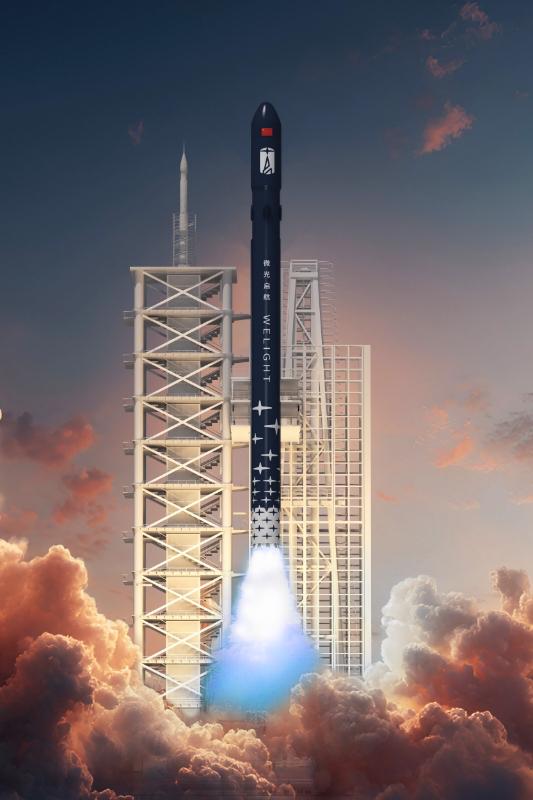
As China’s first and the world’s only liquid-fueled launch vehicle to deeply integrate three cutting-edge technologies—full-flow staged combustion cycle propulsion, all-carbon-fiber composites, and liquid oxygen-methane propellant—Weiguang-1 features technological parity with SpaceX’s Raptor engine in propulsion efficiency and Rocket Lab in materials engineering. Its all-carbon-fiber airframe and full-flow liquid oxygen-methane propulsion solution are not a simple stacking of technologies, but a systematic project aimed at redefining the economic boundaries of rocketry.
Weiguang-1 employs Welight’s proprietary engine, Huaguang-1, to deliver full-flow staged combustion cycle propulsion with a combustion efficiency exceeding 99.2%, an increase of over 30% in payload capacity compared to traditional engines (≤95%), providing a fundamental guarantee for low-cost recovery and reuse.
Additionally, Weiguang-1 utilizes all-carbon-fiber composite materials that achieve a breakthrough in high-performance, low-temperature-resistant liquid oxygen-compatible resin technology, enabling 90% carbon fiber usage of the airframe and reducing weight by 25%-30%. Each kilogram of weight reduction translates to one kilogram of valuable payload, resulting in a 10% increase in payload capacity and a 25% improvement in economic benefits.
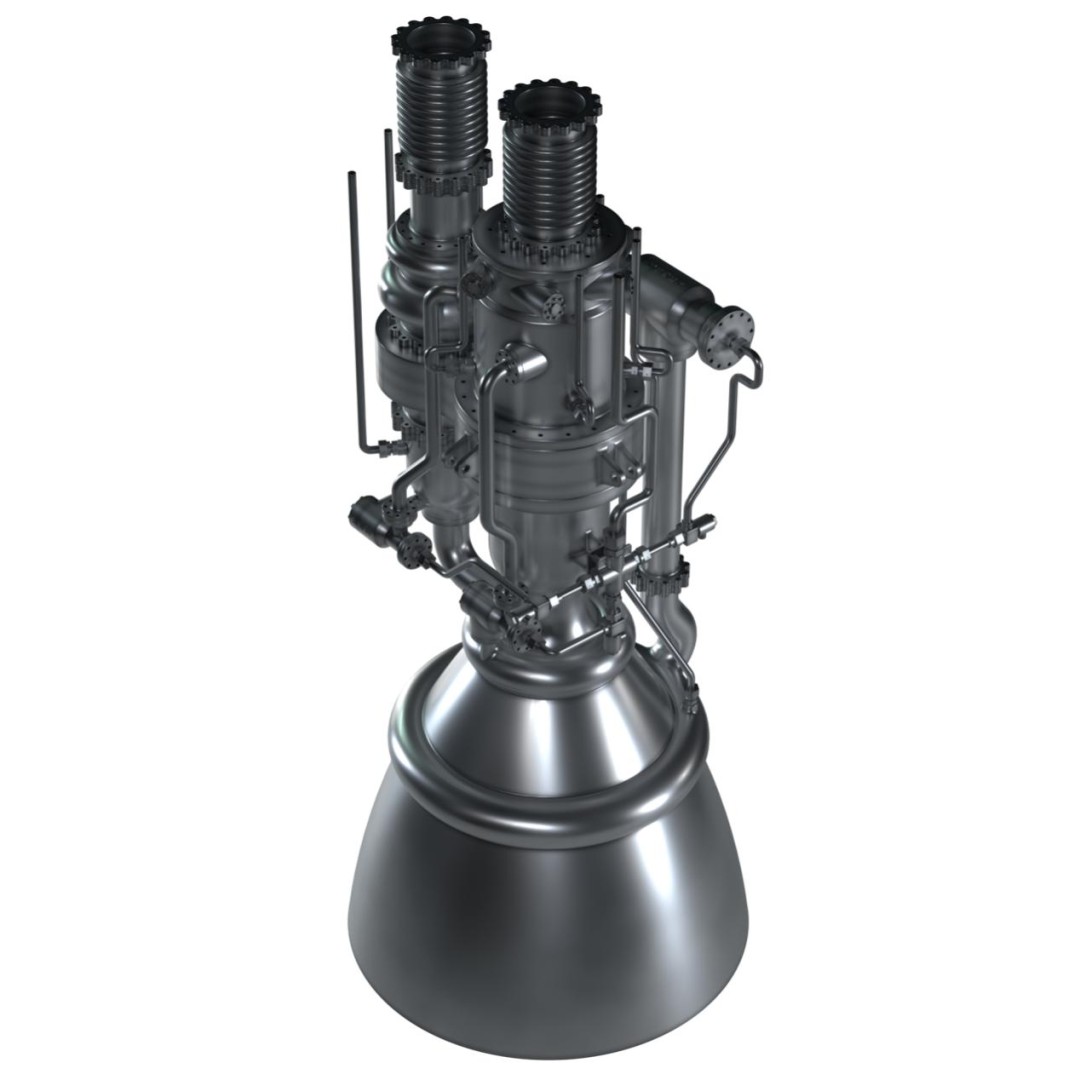
Furthermore, selecting liquid oxygen-methane as the propellant for Weiguang-1 offers distinct advantages: low cost, easy availability, and minimal coking for rapid rocket turnaround and high-frequency reuse, making it well-suited for commercial operations. By adopting this propellant combined with advanced thermoset/thermoplastic carbon fiber lay-up techniques and the continuous fiber 3D printing process, Welight has achieved a breakthrough in developing modular reusable engines, reducing manufacturing costs by over 30%.
Supported by these three core technologies, Weiguang-1 has increased its payload fraction to 3.14%. In the recoverable and reusable configuration, the performance penalty is controlled within 10%, significantly lower than the industry’s typical 20%-40% range. This means “recovery” is no longer a significant sacrifice of performance, but a driver of tangible economic benefits.
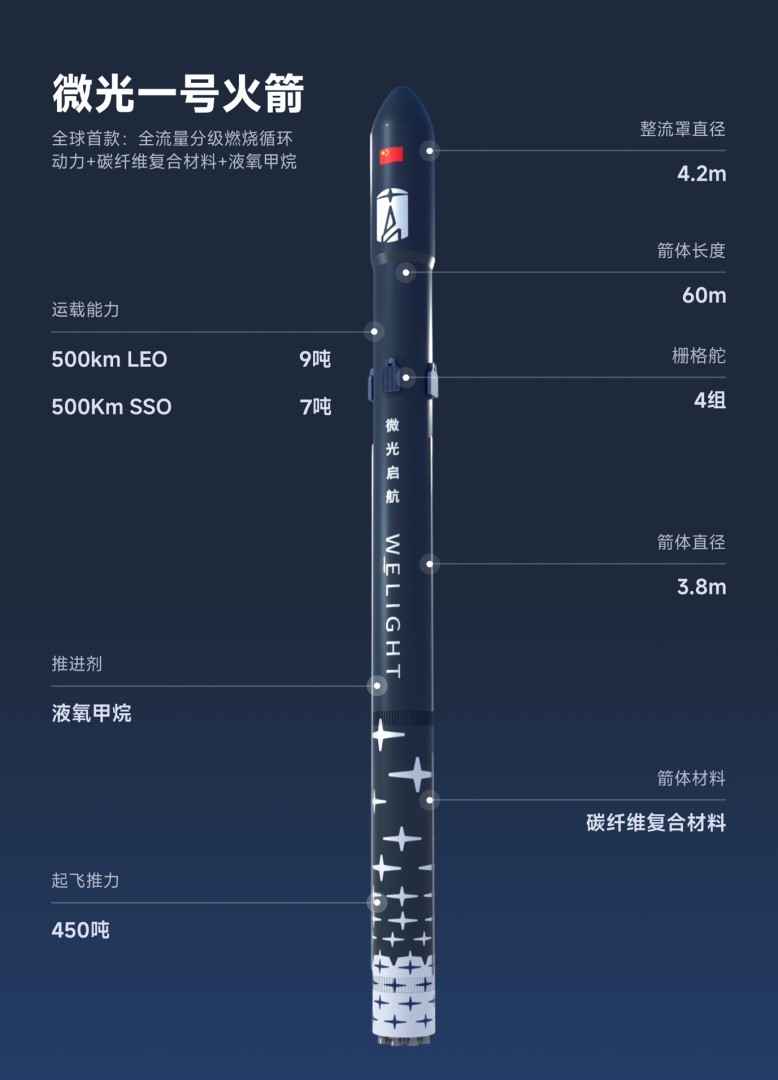
Weiguang-1 adopts the ship-tower adaptive embracing recovery technology. With no vulnerable structures like landing legs on the vehicle, it enables offshore damage-free recovery and automated ground processing. Combined with aerodynamic drag deceleration, its ultra-lightweight recovery system further ensures payload capacity.
Notably, Weiguang-1 prioritizes the environmental friendliness and safety of rocket launches: its upper stage has the capability to ignite more than 20 times, supporting multi-satellite deployment in different orbits and controlled deorbiting to achieve “zero space debris.” Both the first stage and fairing are recoverable, ensuring “debris-free” launch zones. This significantly simplifies launch procedures and reduces insurance costs.
Reportedly, this August, Welight completed an angel round investment worth tens of millions of RMB, officially coming onto the radar of investment institutions as a rising star in China’s commercial space sector. In the same month, Welight established a strategic partnership with Leap71 from the United Arab Emirates, introducing Leap71’s globally advanced “AI + computational engineering” technology in the auxiliary design of the proprietary “Huaguang-1” full-flow staged combustion cycle engine, which powers Welight’s core product—Weiguang-1 to ensure world-class performance and cost competitiveness from the very outset of its design.
Looking ahead, Welight has set a target disposable cost of less than RMB 20,000/kg and a target reusable cost of less than RMB 5,000/kg. When the cost drops to the thousand-yuan level, it will unlock trillion-yuan new markets, including in-space manufacturing, on-orbit services, and deep-space exploration. Welight has also developed a clear roadmap for advancing its business model. It plans to expand from rocket launch services into propulsion system sales and space application services, aiming to achieve economic targets of over 60% gross profit margin and over 40% net profit margin.
In China, commercial aerospace has been mentioned in the National Government Work Report for two consecutive years as a “strategic emerging industry” and a “new growth engine”. The 2024 Central Economic Work Conference explicitly mentioned “commercial aerospace” for the first time, providing top-level design support for industry development. According to relevant data, China’s planned satellite constellations alone—such as China Satellite Network (CSN) and G60—will generate a clear demand for over 11,000 tons of payload and 1,100 launches, corresponding to a launch service market of approximately RMB 440 billion.
Driven by policy support and demand growth, the next one year or two may become the optimal window for rocket brands to participate in key technological breakthroughs and share the dividends of future high growth. According to public information, Welight projects achieving commercial operations by 2028, completing recovery trials by 2029, and forming routine reusability for commercial rockets by 2030. Welight has emerged as the most capable supplier to meet the massive, essential demand for commercial spaceflight at highly competitive pricing.
Media Contact
Company Name: Welight
Contact Person: Daizywang
Email: Send Email
City: Beijing
Country: China
Website: www.welight-11.com
More News
View More
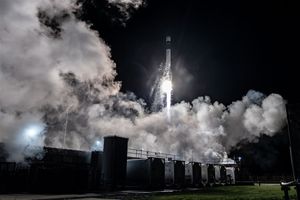
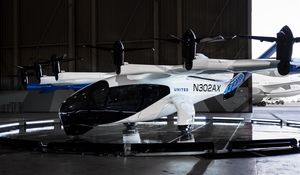

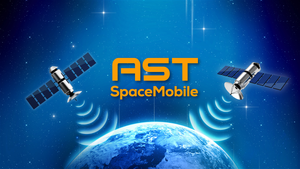

Quotes delayed at least 20 minutes.
By accessing this page, you agree to the Privacy Policy and Terms Of Service.



